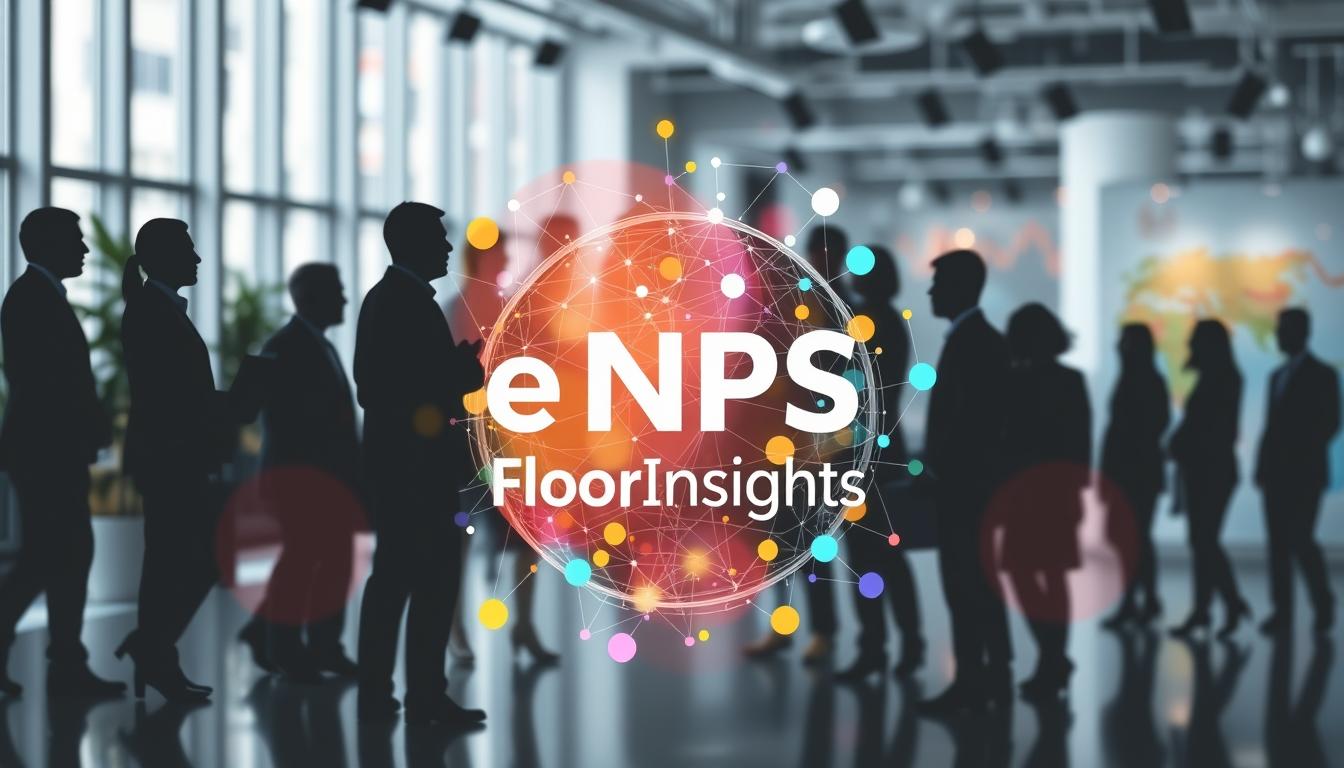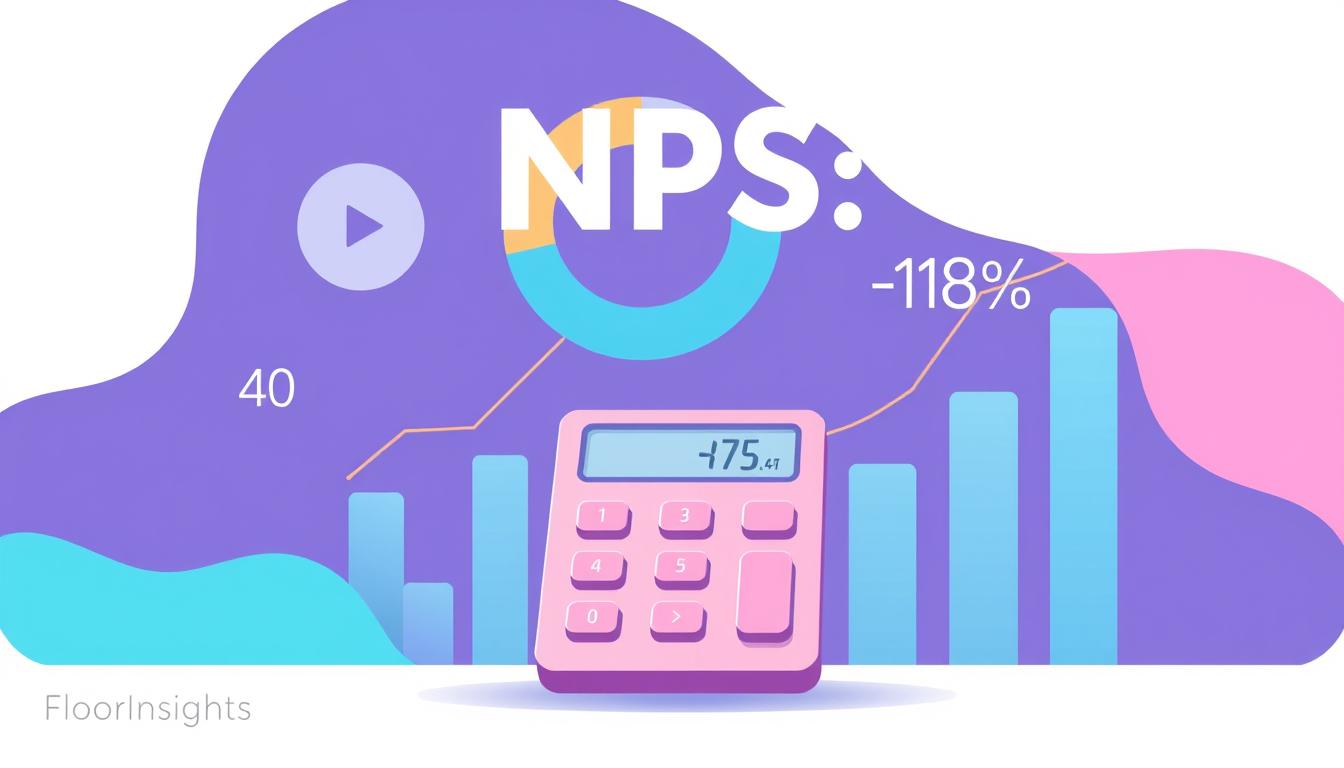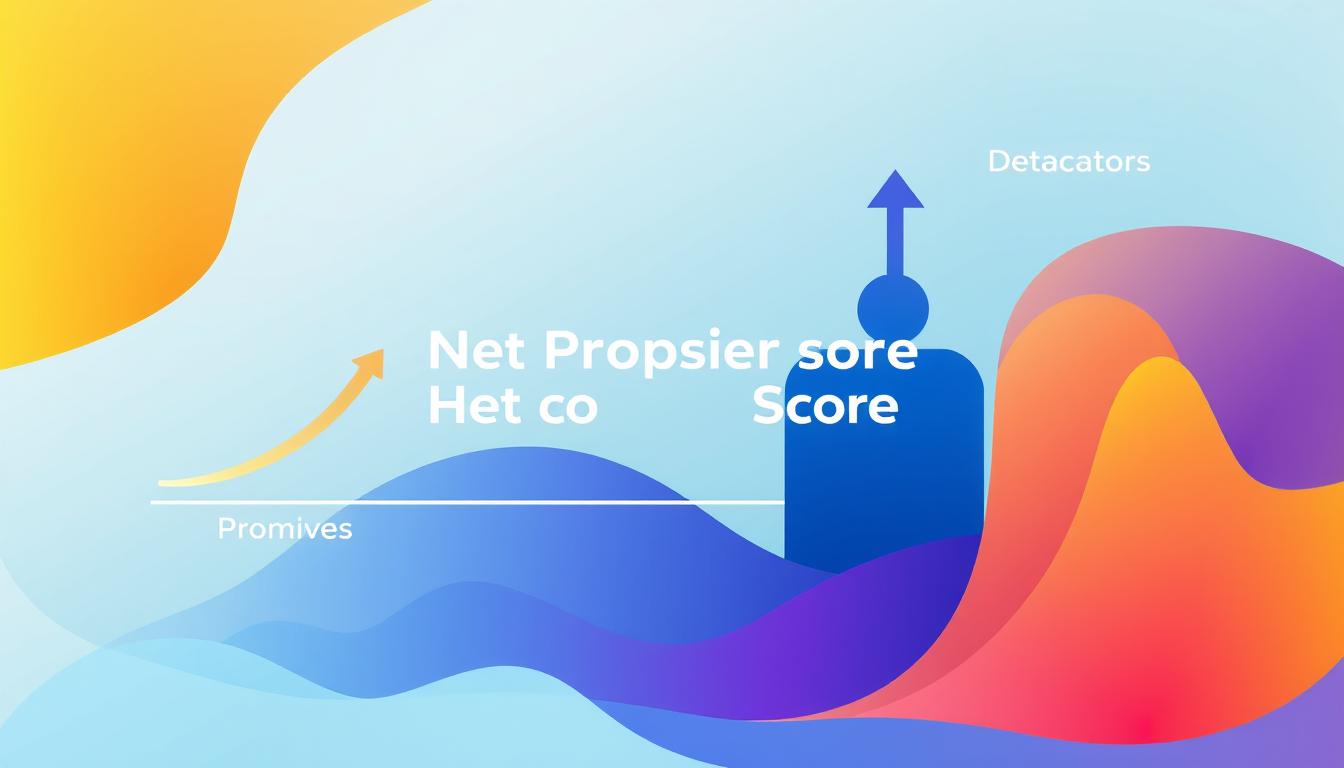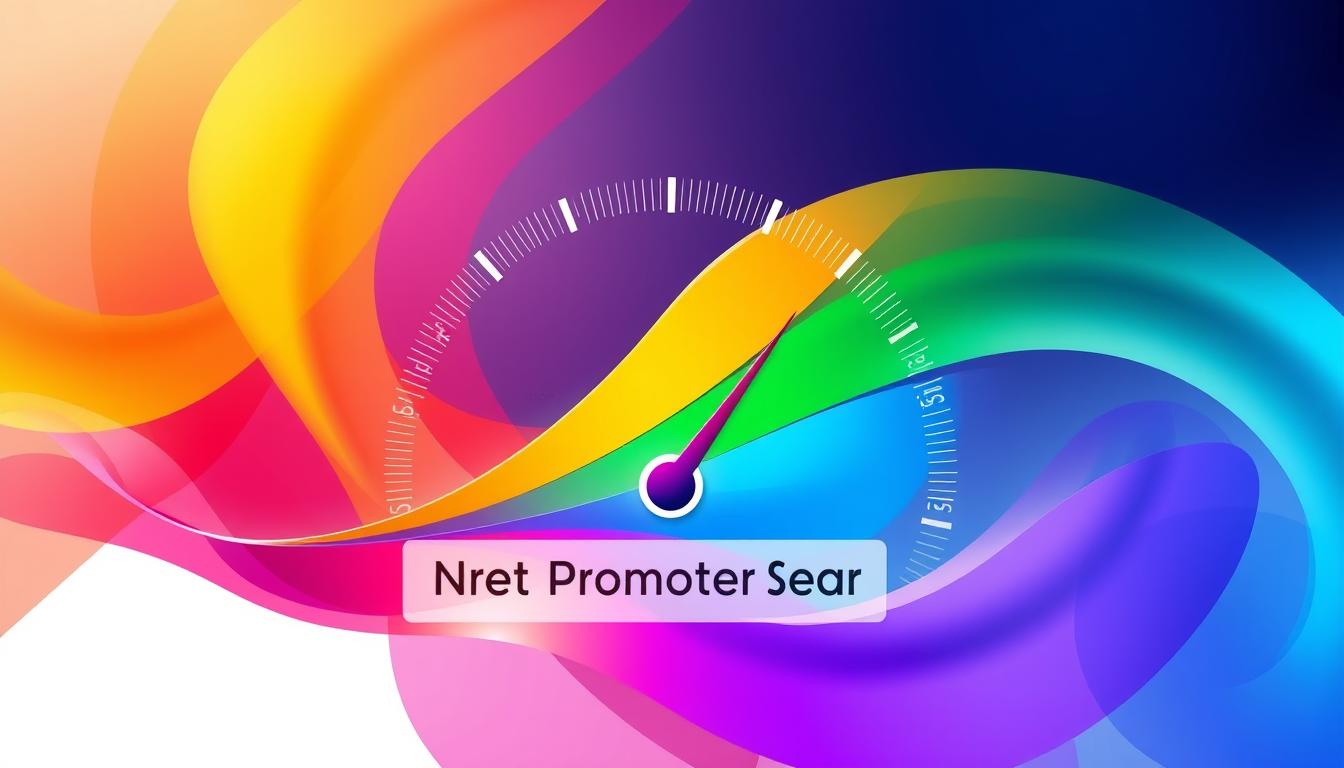In today’s corporate world, particularly in India, the Employee Net Promoter Score (eNPS) has emerged as a vital feedback measurement tool for assessing employee satisfaction and loyalty. This innovative metric helps organizations understand and improve workplace culture, driving significant enhancements in employee engagement. By gauging internal sentiment, eNPS serves as an internal barometer for organizational health, offering actionable insights for fostering a positive and productive work environment.
Key Takeaways
- The Employee Net Promoter Score (eNPS) is a key metric for measuring employee satisfaction and loyalty.
- eNPS helps organizations in India enhance their workplace culture and drive employee engagement.
- It acts as a barometer for the overall health of an organization’s culture.
- eNPS provides actionable feedback that can lead to significant improvements in employee morale.
- Implementing eNPS can foster a positive and productive work environment.
Understanding eNPS: What It Is and How It Works
Employee Net Promoter Score (eNPS) is a metric designed to evaluate employee loyalty and satisfaction within an organization. It is derived from the concept of the Net Promoter Score (NPS), which is widely used to gauge customer loyalty.
Definition of eNPS
The eNPS definition revolves around a single question: “On a scale of 0 to 10, how likely are you to recommend our company as a place to work?” This question aims to capture the overall sentiment of employees toward their workplace, providing insights into their level of satisfaction and engagement.
Calculation Methodology
To understand eNPS calculation, we need to categorize responses into three groups: Promoters (scores 9-10), Passives (scores 7-8), and Detractors (scores 0-6). The eNPS score is calculated by subtracting the percentage of Detractors from the percentage of Promoters. Here’s the formula:
| Category | Score Range | Definition |
|---|---|---|
| Promoters | 9-10 | Highly satisfied employees who are likely to recommend the organization. |
| Passives | 7-8 | Employees who are satisfied but not enthusiastic enough to be counted as promoters. |
| Detractors | 0-6 | Unhappy employees who may have a negative perception of the organization. |
Importance of eNPS in Workplace Culture
Understanding the eNPS definition and methodology is crucial for improving workplace culture. By regularly measuring eNPS, organizations can identify areas needing improvement, foster a more engaged and loyal workforce, and create an environment where employees feel valued and heard.
In essence, improving workplace culture through eNPS involves taking actionable steps based on the feedback gathered, thereby promoting a culture of continuous improvement and employee satisfaction.
The Connection Between eNPS and Employee Engagement
Understanding how the Employee Net Promoter Score (eNPS) impacts employee engagement is vital for any organization striving to enhance its workplace environment. We will explore the crucial link between eNPS, employee morale, and retention rates, shedding light on why a positive eNPS is indicative of a thriving, engaged workforce.
Impact on Employee Morale
Employee morale is a cornerstone of a healthy workplace culture. A high eNPS score often reflects high employee morale, as it represents employees’ willingness to recommend their workplace to others. Happy workers are more likely to be productive and contribute positively to the company atmosphere.
Various studies have shown that when employees feel valued and engaged, it boosts their overall satisfaction. This is where eNPS plays a pivotal role. Companies with strong eNPS results tend to foster environments where employees feel heard and appreciated, promoting high morale.
Correlation with Retention Rates
The relationship between eNPS and retention rates cannot be overstated. High employee engagement often leads to lower turnover, as satisfied employees are less likely to seek opportunities elsewhere. When companies maintain a favorable eNPS, they typically enjoy better retention rates. This is particularly crucial in India’s competitive job market, where retaining top talent can be a significant challenge.
Employing strategies to boost eNPS can help organizations retain their most valuable employees. A high eNPS score indicates that employees are not only happy but also committed to the company, which greatly enhances retention rates.
| Factor | High eNPS Impact | Low eNPS Impact |
|---|---|---|
| Employee Morale | Increased | Decreased |
| Retention Rates | Higher | Lower |
| Employee Engagement | Elevated | Diminished |
By closely monitoring eNPS, organizations can gain invaluable insights into their workforce’s level of engagement, morale, and likelihood to stay with the company. In summary, a robust eNPS system is instrumental in building a content, loyal, and highly engaged workforce.
Best Practices for Implementing eNPS Surveys
Implementing eNPS surveys effectively can profoundly influence workplace culture and employee engagement. Here, we outline vital strategies for optimal deployment, including timing, question design, and ensuring anonymity.
Timing and Frequency
The timing and frequency of eNPS surveys are critical. Conducting surveys too often may lead to fatigue, while infrequent surveys may miss capturing essential feedback. Based on expert guidelines, a quarterly cycle is recommended for maintaining a balance. This frequency ensures feedback is timely and actionable without overwhelming employees.
Designing Effective Questions
The design of survey questions significantly affects the quality of insights gathered. It’s essential to focus on clear, concise, and relevant questions. An effective survey design includes queries that gauge employee satisfaction, motivation, and areas for improvement. Avoiding vague or overly complex questions ensures higher response rates and more meaningful data.
Ensuring Anonymity and Trust
Anonymity is a cornerstone for fostering employee trust in eNPS surveys. Employees are more likely to provide honest feedback when assured that their responses are confidential. Utilizing third-party platforms or anonymized survey tools can reinforce trust, making employees feel secure and valued.
| Key Consideration | Best Practice |
|---|---|
| Timing and Frequency | Quarterly surveys to balance comprehensive feedback and avoid fatigue |
| Designing Effective Questions | Clear, concise, and relevant questions focusing on employee satisfaction and areas of improvement |
| Ensuring Anonymity | Using anonymized survey tools to build employee trust and encourage honest feedback |
How to Interpret eNPS Scores
Interpreting eNPS scores is crucial for gaining actionable insights from employee feedback. Understanding how to categorize respondents can significantly impact eNPS score improvement and foster a culture of consistent feedback analysis.
Identifying Promoters, Passives, and Detractors
eNPS interpretation begins with identifying the three main respondent categories:
- Promoters (score 9-10): Enthusiastic employees likely to recommend your organization. Their positive feedback helps you understand what’s working well.
- Passives (score 7-8): Satisfied but not overly enthusiastic employees. They are generally content but could be swayed by better offers from competitors.
- Detractors (score 0-6): Unhappy employees who might share negative feedback within and outside the organization. Their concerns often highlight critical areas needing improvement.
Using eNPS Data for Improvement
Effective feedback analysis is integral to utilizing eNPS data for improvement. We must systematically analyze the feedback from each respondent category to pinpoint specific weaknesses and strengths. This analysis helps craft targeted action plans aimed at eNPS score improvement.

Here’s how we can use eNPS feedback analysis to drive continuous improvement:
- Evaluate Promoter Feedback: Identify common themes that contribute to employee satisfaction for reinforcement.
- Address Passive Concerns: Explore passive responses for areas needing slight enhancements to turn passives into promoters.
- Resolve Detractor Issues: Prioritize addressing detractor feedback to prevent further discontent and potential turnover.
Implementing a structured approach towards eNPS interpretation and feedback analysis allows us to create a thriving workplace culture aimed at continuous growth and employee satisfaction.
| Action Plan | Target Respondent | Expected Outcome |
|---|---|---|
| Introduce Employee Recognition Programs | Promoters | Increased Promoter Retention |
| Enhance Communication Channels | Passives | Higher Engagement and Conversion to Promoters |
| Address Critical Concerns | Detractors | Reduction in Negative Sentiment |
Leveraging the Net Promoter Score for Organizational Change
Implementing the Net Promoter Score (NPS) within an organization offers a unique opportunity for transformative insights. By leveraging eNPS data, companies can drive meaningful organizational change. The ability to interpret and act on this feedback can guide firms in cultivating a more engaged, satisfied, and productive workforce.
Driving Cultural Shifts with eNPS Insights
A significant benefit of eNPS is that it allows companies to discern areas that need improvement directly from their employees’ perspectives. These insights are instrumental in driving cultural shifts within the company. As we gather data, patterns emerge that highlight what employees value and what areas require attention. This information serves as a roadmap for reshaping organizational culture to better align with employee needs and expectations.
Building a Feedback-Responsive Culture
Fostering a responsive culture involves more than just collecting feedback; it necessitates acting upon it. When employees see their input leading to tangible changes, it creates a sense of ownership and trust. By establishing mechanisms to continuously gather and act on eNPS feedback, companies can create a dynamic environment that adapts to the evolving needs of their workforce, ultimately enhancing overall organizational health.
The resultant cultural shift promotes an inclusive atmosphere where engagement and satisfaction are prioritized, driving organizational success.
Case Studies: Successful Use of eNPS in Indian Companies
Exploring the realm of *eNPS Indian case studies* provides significant insights into how companies across various industries leverage this tool for improving workplace culture and employee satisfaction. Below, we delve into compelling instances where prominent companies from the *IT industry*, *manufacturing sector*, and *service industry* have seen remarkable results by implementing eNPS.
IT Industry
In the competitive *IT industry*, companies like Infosys have embraced eNPS to gauge and enhance employee engagement. By regularly collecting feedback through eNPS surveys, they identified key areas needing improvement such as work-life balance and career development opportunities. This data allowed Infosys to implement targeted initiatives, leading to a noticeable boost in employee morale and productivity.
Manufacturing Sector
The *manufacturing sector* in India, particularly at companies like Tata Motors, has also reaped the benefits of eNPS. Tata Motors used eNPS data to understand the ground-level issues faced by their employees. Addressing concerns related to workplace safety and training programs, the company saw improved employee satisfaction and a safer, more productive work environment.
Service Industry
In the dynamic *service industry*, companies such as ICICI Bank have effectively used eNPS to refine their employee engagement strategies. By integrating frequent eNPS surveys, ICICI Bank could swiftly address workforce issues, promoting a culture of continuous feedback and responsive management. This led to higher retention rates and increased loyalty among employees.
| Company | Industry | eNPS Implementation | Improvements Seen |
|---|---|---|---|
| Infosys | IT Industry | Employee feedback on work-life balance and career opportunities | Increased morale and productivity |
| Tata Motors | Manufacturing Sector | Addressed workplace safety and training concerns | Improved employee satisfaction and workplace safety |
| ICICI Bank | Service Industry | Frequent eNPS surveys for immediate feedback | Higher retention rates and employee loyalty |
Common Pitfalls to Avoid When Using eNPS
Implementing eNPS can significantly enhance our workplace culture, but it’s essential to be aware of common eNPS challenges and eNPS implementation errors that organizations often face. Over-relying on the eNPS metric without conducting actionable follow-ups can lead to stagnant results. We must remember that eNPS is a tool, not the final solution. Regularly reviewing feedback and initiating tangible changes based on that feedback is crucial.
Miscommunication during rollout is another eNPS implementation error that can derail our efforts. Clearly explaining the purpose, methodology, and importance of the eNPS survey to employees ensures higher participation and more accurate feedback. It’s vital to maintain transparency and foster trust among employees to gather genuine insights.
Additionally, insufficient analysis of eNPS data can obscure the insights we need to drive improvements. Simply collecting data without thorough analysis and interpretation renders the exercise somewhat ineffective. We should aim to dissect the results meticulously, identifying patterns and trends to shape our organizational strategies.
To help navigate these eNPS challenges more effectively, let’s consider a few strategies:
- Ensure that actionable plans are established and communicated post-survey.
- Maintain open and transparent communication with employees about the survey’s purpose.
- Invest time in comprehensive analysis to unearth valuable insights.
By addressing these eNPS implementation errors, Indian organizations can leverage eNPS more effectively to build a robust and engaging workplace culture.
Integrating eNPS with Other Feedback Mechanisms
To achieve a comprehensive understanding of employee sentiment, it is essential to integrate eNPS with various other feedback mechanisms. By leveraging multiple tools and approaches, we can create a holistic view of the workplace culture while gaining richer insights into employee engagement and satisfaction. This integration is particularly valuable for Indian enterprises looking to optimize their human resources strategy and drive meaningful organizational change.
Combining eNPS with Traditional Surveys
Traditional surveys have long been a staple in gathering workforce feedback, offering extensive data on various aspects of the employee experience. Integrating eNPS with these surveys allows organizations to balance quantitative and qualitative data. While eNPS provides a quick pulse on employee loyalty and satisfaction, traditional surveys can delve deeper into specific areas such as job satisfaction, leadership, and work-life balance. This synergy ensures that we not only understand the broad strokes of employee sentiment but also have the detailed data necessary to address specific concerns.
Utilizing 360-Degree Feedback
360-degree feedback offers an all-encompassing perspective by collecting evaluations from peers, subordinates, and supervisors. When combined with eNPS, this method provides a robust framework for understanding how individual performance and team dynamics impact overall employee satisfaction. By integrating eNPS results with 360-degree feedback, we can identify key promoters, passives, and detractors within the team structure and develop targeted interventions to foster a more collaborative and supportive work environment.
Incorporating Real-Time Feedback Tools
The immediacy of real-time feedback tools adds another layer of insight, allowing organizations to capture sentiments as they occur. Integrating real-time feedback with eNPS enables us to detect and address issues quickly, providing a dynamic and responsive approach to employee engagement. This is especially crucial in fast-paced industries where employee sentiment can change rapidly. By combining the long-term insights of eNPS with the immediate data from real-time feedback tools, we can maintain a continuous loop of improvement and ensure that our organization remains agile and responsive to our employees’ needs.
FAQ
What is the Employee Net Promoter Score (eNPS)?
The Employee Net Promoter Score (eNPS) is a specific application of the standard Net Promoter Score (NPS) used internally within an organization to measure employee satisfaction and loyalty. This feedback measurement tool helps assess how likely employees are to recommend their workplace to others, providing valuable insights into workplace culture and employee engagement.
How is eNPS calculated?
The eNPS is calculated by asking employees to rate on a scale of 0-10 how likely they are to recommend their workplace to others. Respondents are categorized into Promoters (score 9-10), Passives (score 7-8), and Detractors (score 0-6). The eNPS score is derived by subtracting the percentage of Detractors from the percentage of Promoters.
Why is eNPS important for improving workplace culture?
eNPS is a crucial Customer satisfaction indicator for workplace culture as it provides actionable insights into how employees perceive their work environment. It helps organizations identify areas for improvement and fosters a positive culture by prioritizing employee feedback and engagement.
What is the impact of eNPS on employee morale?
A high eNPS typically indicates high employee morale, as it reflects a workforce that is satisfied with their work environment and likely to promote it. Conversely, a low eNPS can signal low morale and highlight issues that need to be addressed to improve the overall employee experience.
How does eNPS correlate with employee retention rates?
There is a strong correlation between eNPS and retention rates; organizations with high eNPS scores often experience lower turnover rates. Positive eNPS suggests that employees are more engaged and loyal to the organization, reducing the likelihood of them seeking opportunities elsewhere.
When should we conduct eNPS surveys?
eNPS surveys should be conducted periodically to capture ongoing sentiment and trends. Quarterly or biannual surveys are common practices. It’s crucial to find a balance that keeps the feedback loop active without over-surveying employees, which can lead to survey fatigue.
How can we design effective eNPS survey questions?
Effective eNPS survey questions should be clear, concise, and relevant to the employees’ experiences. Beyond the primary eNPS question, additional questions should address specific areas such as workplace environment, leadership, and growth opportunities. This helps in gathering broader insights for targeted improvements.
How do we ensure anonymity and build trust in eNPS surveys?
Ensuring anonymity in eNPS surveys is vital to build trust and encourage honest feedback. Use anonymous survey tools and communicate clearly to employees that their responses are confidential. Building a culture of trust where feedback is used constructively will also enhance participation and the quality of insights gained.
What should we do after receiving eNPS scores?
After receiving eNPS scores, it’s important to analyze the data to identify key trends and areas for improvement. Organizations should communicate findings to employees and take actionable steps to address issues raised. Continuous feedback loops and follow-up actions are essential for driving improvement and maintaining employee trust.
How can eNPS drive organizational change?
eNPS can be a powerful tool for driving organizational change by providing clear insights into employee sentiment. Organizations can leverage eNPS data to initiate cultural shifts, improve leadership practices, and foster a feedback-responsive environment that continually strives for improvement.
Can you provide examples of successful eNPS implementation in Indian companies?
Yes, several Indian companies across various sectors have successfully implemented eNPS. For instance, IT firms often report increased employee satisfaction and productivity, manufacturing companies observe better retention rates, and service industries notice improved client service quality. These examples highlight the diverse applications and benefits of eNPS in different business landscapes.
What are common pitfalls to avoid with eNPS?
Common pitfalls include over-relying on eNPS without actionable follow-up, poor communication during survey rollout, and insufficient analysis of the feedback. To avoid these, ensure a robust follow-up strategy, clear communication with employees, and comprehensive data analysis to effectively utilize eNPS insights.
How can eNPS be integrated with other feedback mechanisms?
eNPS can be effectively combined with other feedback mechanisms such as traditional surveys, 360-degree feedback, and real-time feedback tools. This holistic approach ensures a more nuanced understanding of employee sentiment and helps organizations address issues from multiple perspectives, leading to more comprehensive improvement strategies.
Related Posts
- Implementing NPS in a B2B Business
- NPS and the Power of Personalized Customer Service – NPS and Personalization
- Using NPS to Guide Marketing and Sales Initiatives
- How NPS Feedback Drives Innovation in Technology – NPS in the Technology Industry
- Tech Giants and Their NPS Strategies: Lessons from the Best – NPS in the Technology Industry
- NPS and the Role of Personalization in the Customer Journey – NPS and Customer Journey
- Using NPS to Map the Entire Customer Journey – NPS and Customer Journey
- How NPS Can Help Identify eCommerce Website Issues – NPS and eCommerce






